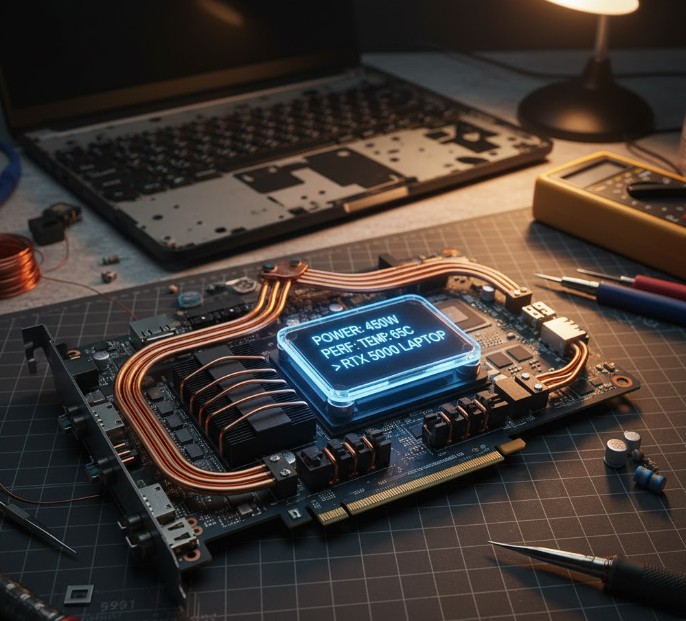In a bold DIY hardware feat, a laptop equipped with the mobile NVIDIA GeForce RTX 4090 was modified via a “shunt mod” to fault its actual power ceiling—allowing the GPU to draw significantly more wattage than was originally intended. Such modifications gave the graphics card performance levels near those of mobile version RTX 5090, as reported by tech outlets.
What A Shunt Mod Does and Why It Matters
A shunt mod essentially alters the resistor that supposedly governs power draw in the GPU power delivery. By lowering resistance, the GPU thinks it is consuming less power than it actually does—hence runs at higher performance level for longer before throttling down. In one case cited, the modder replaced the factory resistor (5 mΩ) with a 1 mΩ resistor in parallel and so effectively lowered the resistance to just about ~0.83 mΩ. The GPU then reported ~40-45 W, while in reality, it was drawing ~240 W.
Real-World Benchmarks Show Surprising Gains Over RTX 5090
Benchmark results from the modified system showed significant uplift: about 35.5 % better in one synthetic test compared to the standard RTX 4090, and about 7.6 % ahead of average RTX 5090 laptops in one scenario. Performance gains across a suite of benchmarks averaged around 19.2 % over the baseline RTX 4090 and slightly ahead of the average RTX 5090 mobile.
Risks And Trade-Offs of Implementing Shunt Mods Yourself
While the performance should be enticing, there are real serious caveats to modifying this sort. There require accompanying electronics skill and risk of hardware damage, and cooling systems and power delivery will be put under duress. The article warns that unless you are sure about your hardware modification skills, there are real chances of destroying the hardware.
What This Means for Mobile Gaming and Laptop GPU Design
This successful undertaking shows how frequently power limitations and thermal constraints—rather than raw silicon capability alone—are what determine performance in mobile GPUs. For both vendors and consumers, it brings forth the question: how much more performance may be lying in an untapped state behind standard caps, and how might cooling and chassis design evolve to support higher power envelopes?
For gamers, modders, and hardware enthusiasts, the story of the mobile RTX 4900 beating a 5090 laptop via a shunt mod is as cautionary as it is inspiring. If this piques your interest, tread with care—this is no mere plug-and-play upgrade!
Also Read This: Adobe’s SLR-Style Camera App Now Supports iPhone 17
News Source: PCmag.com







Leave a Reply